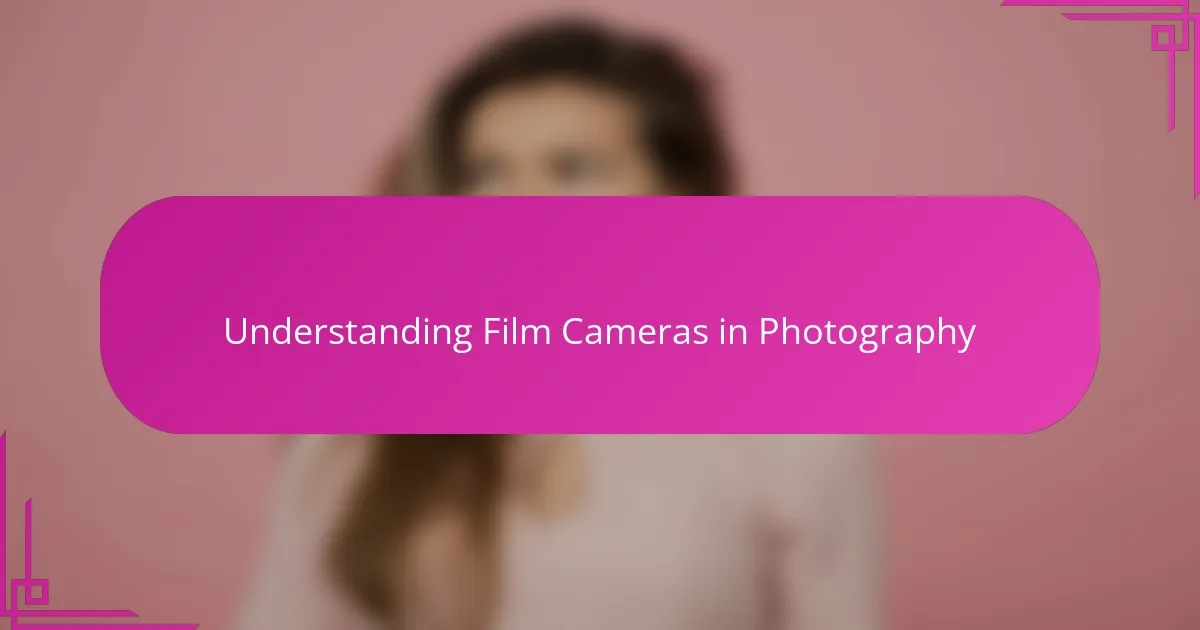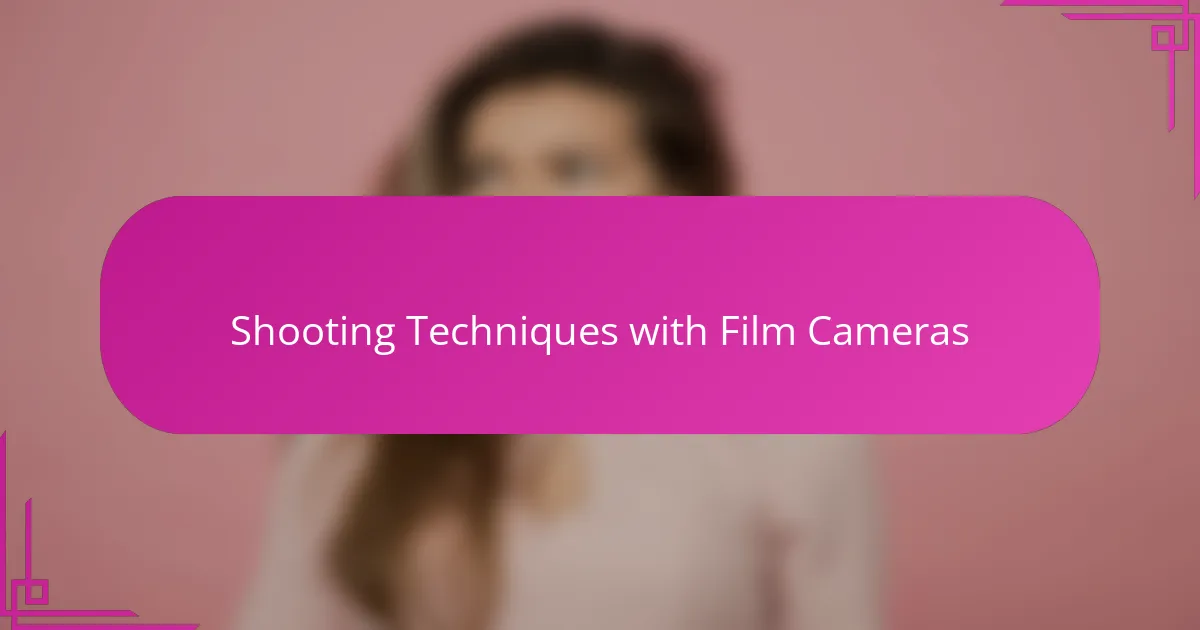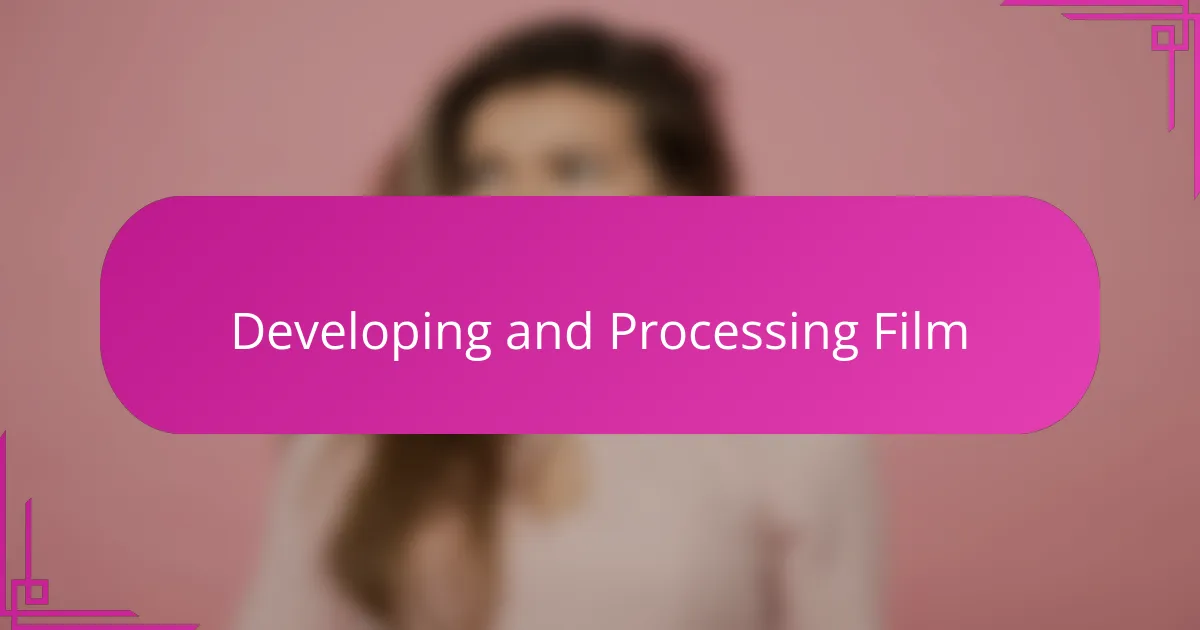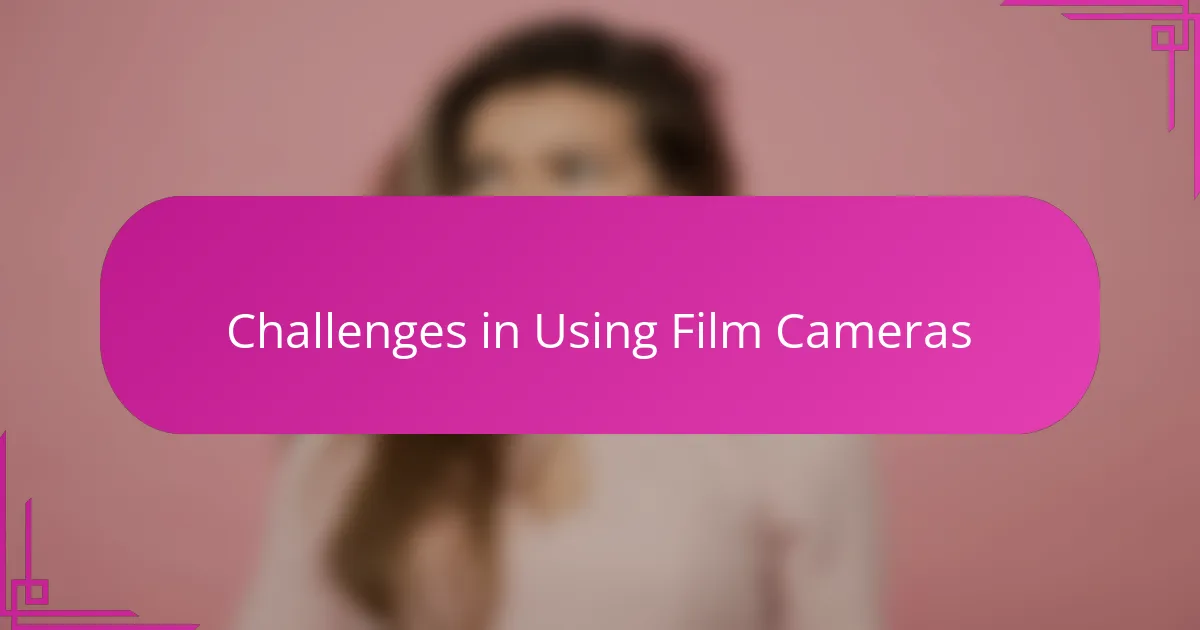Key takeaways
- Film photography offers a unique, intentional approach that enhances creativity and mindfulness compared to digital photography.
- The aesthetic quality of film, with its warmth and grain, creates images that evoke emotion and age gracefully.
- Mastering shooting techniques, like manual focus and bracketing exposures, enhances skills and patience while capturing images.
- Developing film is a hands-on process that connects photographers more intimately with their work, transforming the art of photography into a personal experience.

Understanding Film Cameras in Photography
Film cameras have a unique charm that digital simply can’t replicate. I remember the first time I held one—it felt tangible, deliberate. You’re not just clicking a button; you’re engaging in a slower, more thoughtful process that makes every shot feel intentional.
What fascinates me most about film is how it captures light and texture differently, often producing results with a warmth and depth that feels almost nostalgic. Have you ever noticed how grain adds character rather than noise? It’s like each frame tells its own story beyond the surface of the image.
Understanding these cameras means appreciating the balance between chemistry and mechanics. It’s not just technology but an art form where knowing your film type, light meter, and exposure settings can profoundly shape the final photograph. This hands-on aspect reconnects me with the roots of photography in a way that feels grounding and exciting.

Benefits of Film Cameras Today
Using film cameras today offers a refreshing break from the instant gratification of digital photography. I find that waiting to develop a roll builds anticipation and deepens my appreciation for each shot. Doesn’t that slow reveal make the process feel more meaningful?
One benefit I truly value is how film encourages me to slow down and consider every frame carefully. Unlike digital, where endless shots tempt us to spray and pray, film demands intentionality. This deliberate approach has improved my composition skills and made photography feel more mindful.
Film also brings an unmatched aesthetic quality that continues to captivate me. The subtle grain and natural color shifts evoke emotion in ways digital often can’t replicate. Have you noticed how film images seem to age gracefully, carrying a timeless quality that digital struggles to match?

Choosing the Right Film Camera
Choosing the right film camera can feel overwhelming at first, but I found that it really comes down to what kind of experience you’re after. Are you drawn to fully manual controls that let you play with every setting, or do you prefer something more straightforward to just point and shoot? I remember my first SLR—it taught me so much about exposure and focus, but it also made me appreciate the simplicity of rangefinders.
Film format is another important consideration. Do you want the classic 35mm with its portability and variety of lenses, or does the larger 120 medium format appeal to you for that exquisite detail and size? I experimented with both and quickly realized that while medium format images look stunning, the bulkiness wasn’t always practical for everyday shooting.
Also, don’t underestimate the condition of vintage cameras when buying used. I once bought a bargain that needed a costly repair, which made me more cautious. Taking your time to research brands, camera models, and finding one that feels right in your hands makes all the difference. After all, comfort and reliability are key to enjoying this analogue adventure.

Shooting Techniques with Film Cameras
When I shoot with film cameras, I always make a conscious effort to master the fundamentals of exposure. Since there’s no instant preview, I rely heavily on my light meter and manual settings to get the right balance. Have you ever felt that thrilling mix of anticipation and uncertainty before winding the film forward? It’s that tension that keeps me fully engaged in the moment.
Another technique I’ve grown to appreciate is bracketing exposures. Especially in tricky lighting, I’ll take multiple shots at different settings to ensure one captures the scene perfectly. This method taught me patience and the value of thoughtful experimentation—qualities that digital rarely demands from me.
Focusing manually is another skill that transforms how I see through the lens. It forces me to slow down and frame intentionally, paying close attention to depth of field and composition. I remember once nailing a sharp, well-focused portrait simply because I took my time—something I might have rushed past in digital shooting. Shooting with film truly reminds me to savor every creative choice.

Developing and Processing Film
Developing and processing film is where the magic really begins for me. I still recall the first time I dipped a roll into the developer—the nervous excitement of not knowing exactly how the images would turn out made it feel like opening a treasure chest. Isn’t it fascinating how this chemical dance reveals your photographed moments, frame by frame, almost like alchemy?
The process itself demands patience and precision. Mixing the chemicals just right, controlling temperatures, and timing each step taught me a deeper respect for craftsmanship. Have you ever noticed how this hands-on involvement connects you more intimately to your images, unlike the instant results digital provides?
Sometimes I find myself alone in the darkroom, quietly watching each negative appear on the paper during printing. That quiet anticipation, that moment when an image slowly emerges, never gets old. It reminds me that photography isn’t just about capturing light but nurturing it into something tangible and personal.

Challenges in Using Film Cameras
The first challenge that really caught me off guard was the limited number of shots per roll. I remember carefully counting each frame, afraid to waste any, which is a stark contrast to the endless firepower of digital cameras. Have you ever felt that pressure, knowing every click uses up precious film?
Then there’s the whole unpredictability factor. Without that instant preview, you’re often left guessing if your exposure or focus is just right until the film is developed days or even weeks later. I must admit, that waiting period can sometimes be nerve-wracking—but it also makes the eventual reveal all the more rewarding.
Mechanical quirks also add a layer of complexity. My old camera sometimes jammed or failed to advance the film properly, teaching me to be patient and troubleshoot on the fly. These hiccups can feel frustrating but also remind me that film photography is as much about embracing imperfections as chasing perfection.

Personal Experiences with Film Photography
Using film cameras has taught me to slow down and truly connect with the moment. I recall a summer afternoon when I took my trusted 35mm out for a walk, carefully composing each shot. There was a sense of calm and focus that digital photography rarely offers me—a feeling like I was capturing memories rather than just images.
One of the greatest joys I’ve found is the surprise that comes with finally developing a roll. I still get a rush of excitement flipping through the negatives, wondering which shots worked and which didn’t. Have you ever felt that mixture of anxiety and delight, waiting to see if your efforts paid off? It’s a nerve-wracking but deeply satisfying part of the process.
Of course, film photography hasn’t been without its setbacks. I remember once losing an entire roll due to a light leak—a frustrating but invaluable lesson in handling and patience. These moments have made me appreciate the fragile beauty of film even more, reminding me that every frame is a deliberate choice, full of intention and care.